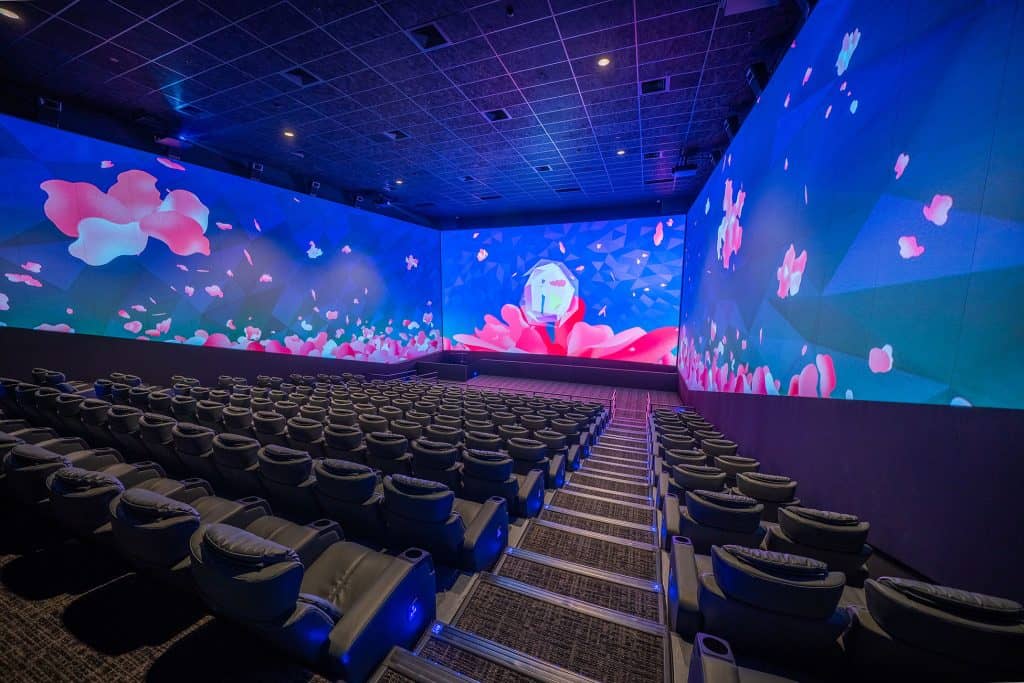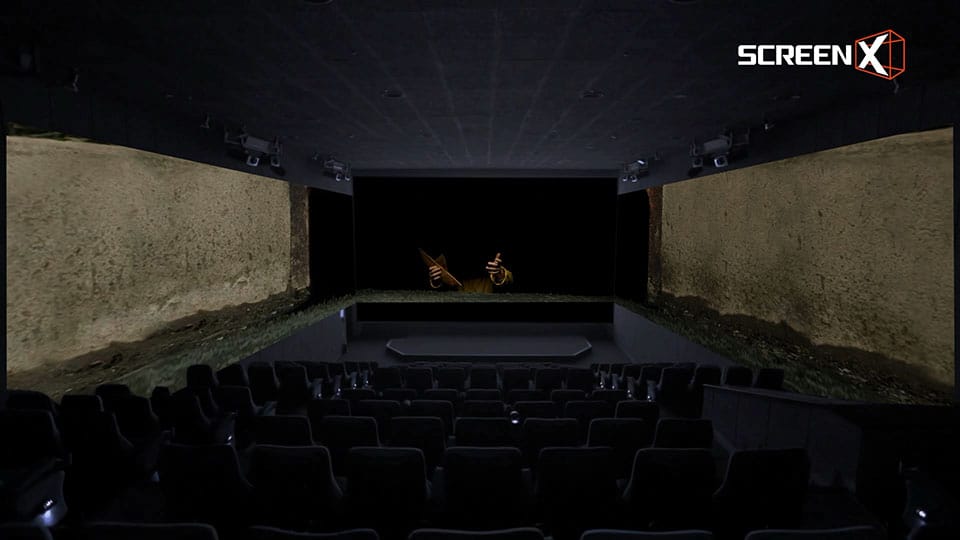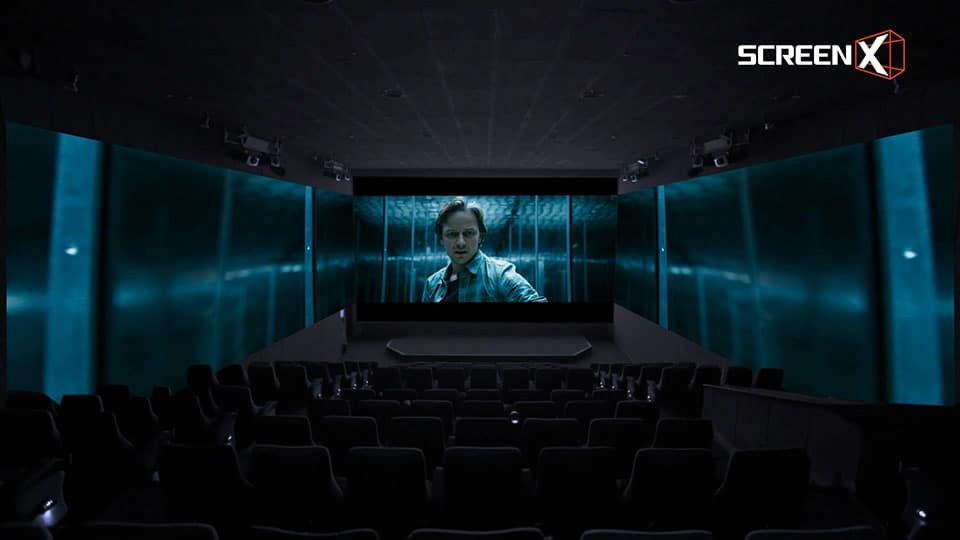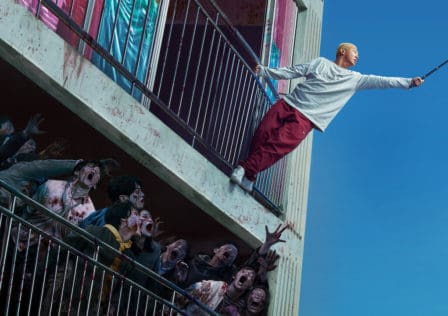The history of cinema is a road paved with gimmicks.
See, the Cinematic Experience is a sacred thing, and must be protected at all cost. How else would you get people to leave the comforts of their homes and short shorts, weave through harrowing traffic, and spend good money on movies? And if protecting the Cinematic Experience means evolving it at any means necessary, then evolve it we shall. Even if it means passing out scratch-and-sniff cards at the entrance.
But evolution doesn’t necessarily produce winners, so the history of cinema is a road of gimmick-induced potholes. Few have ever experienced the expensive, distracting, and rather ineffective innovation known as Smell-o-Vision; while Sensurround proved so effective that ceiling plaster literally crumbled onto hapless cinema-goers during the 1974 screenings of Earthquake (though you can’t complain that it’s not immersive enough).
Yet some gimmicks remain, and are now staples of cineplexes everywhere. IMAX – with its humongous screens and tall aspect ratio – remains a go-to for large, visually-spectacular films (and is still seeing profit growth despite declining ticket sales). 3D has stuck around since James Cameron’s Avatar, and will likely stay until all the Avatars are out. For the adrenaline junkie, there’s D-Box.
And now we have ScreenX, which has recently graced the Golden Screen Cinemas (GSC) theatre in the 1 Utama Shopping Centre in Malaysia. Using five projectors, ScreenX creates a 270-degree theatre experience by projecting it onto three walls instead of one, essentially covering your peripheral vision.

Ms Anna Wong, Leasing General Manager of 1 Utama Shopping Centre; and Mr Heng Beng Fatt, Deputy General Manager, GSC at the ScreenX media launch recently.
The core question remains: will ScreenX be a pothole or a billboard along the road of cinema? I’m going to say that it’s the latter. At least, I hope so.
Having all three walls displaying images can be a unique experience. During the special press experiential screening that GSC hosted, they played two made-for-ScreenX advertisements, which basically showcased what the setup can do for visually stunning sequences and kinetic action.

I had expected the results to be more like playing a video game with three monitors, where the wider view means being able to take in more details to your left and right. What I didn’t expect was how it reminded me more of putting on a VR headset, because of the way the three screens envelop your entire periphery vision. It’s a bit of a problem during the aforementioned action-packed ad, which made me feel a little disoriented the way VR headsets do.
The ScreenX experience on an actual movie is a very different one, though. I had caught IT: Chapter 2 (my review here) on ScreenX, and was surprised to find that the two side screens don’t actually stay on throughout the entire movie, only during key scenes. Most of the time, it’s during the movie’s big scares.
Widening the screen does create some interesting situations for a horror movie like IT. Making you more immersed during the scares is just one thing – with a wider view, the movie can play with audience expectations more effectively. The anticipation for something to appear at the side screen creates tension. During one scene, where I expected a camera pan for a jump scare, my eyes kept flitting to the side walls, wondering if something has already appeared.

It’s quite novel, and for directors who shoot specifically for ScreenX, I can expect the audience’s expectation to be played with more effectively.
But because the two extra screens only work during key scenes, this means the movie outright telegraphs the moments the scares are coming. It hadn’t ruined my viewing of IT: Chapter 2 – most horror movies typically signal the impending scare through camera work and soundtrack anyway – but I do wonder if knowing when you’re “safe” would take away the helplessness that horror movies should ideally create.
So does ScreenX work with horror movies? I think it’ll come down to the filmmakers and how they can exploit a wider screen. I think effective horror lies in being able to unsettle audiences, and three screens showing you very little but enveloping you in anticipation has potential for a fascinating experience.
But the real question lies in whether ScreenX is a good gimmick. I think it is. Like how IMAX screens can switch ratios depending on a movie’s sequences, I think ScreenX can potentially create some memorable cinematic experiences. Imagine something akin to a Death Star trench run on three screens — it will likely look great on ScreenX. I also think the Stargate sequence in 2001: A Space Odyssey will be trippier on three screens.
There’s potential here, if filmmakers are willing to explore. Let’s just hope that they do.
Also published on Medium.

makes it a life goal to annoy everyone with random Disney trivia. When he’s not staring at a screen or holding a controller of some sort, he is thinking about curry noodles. Like right now.



